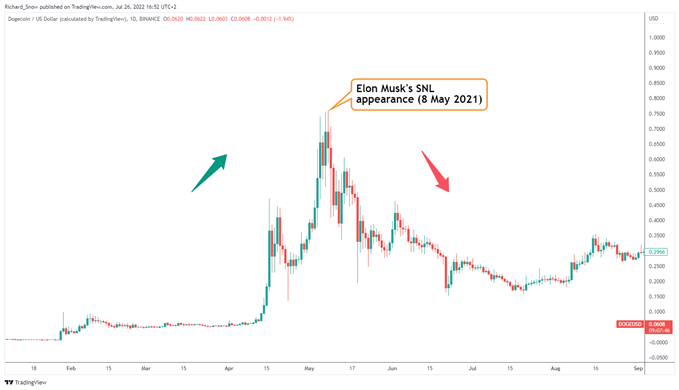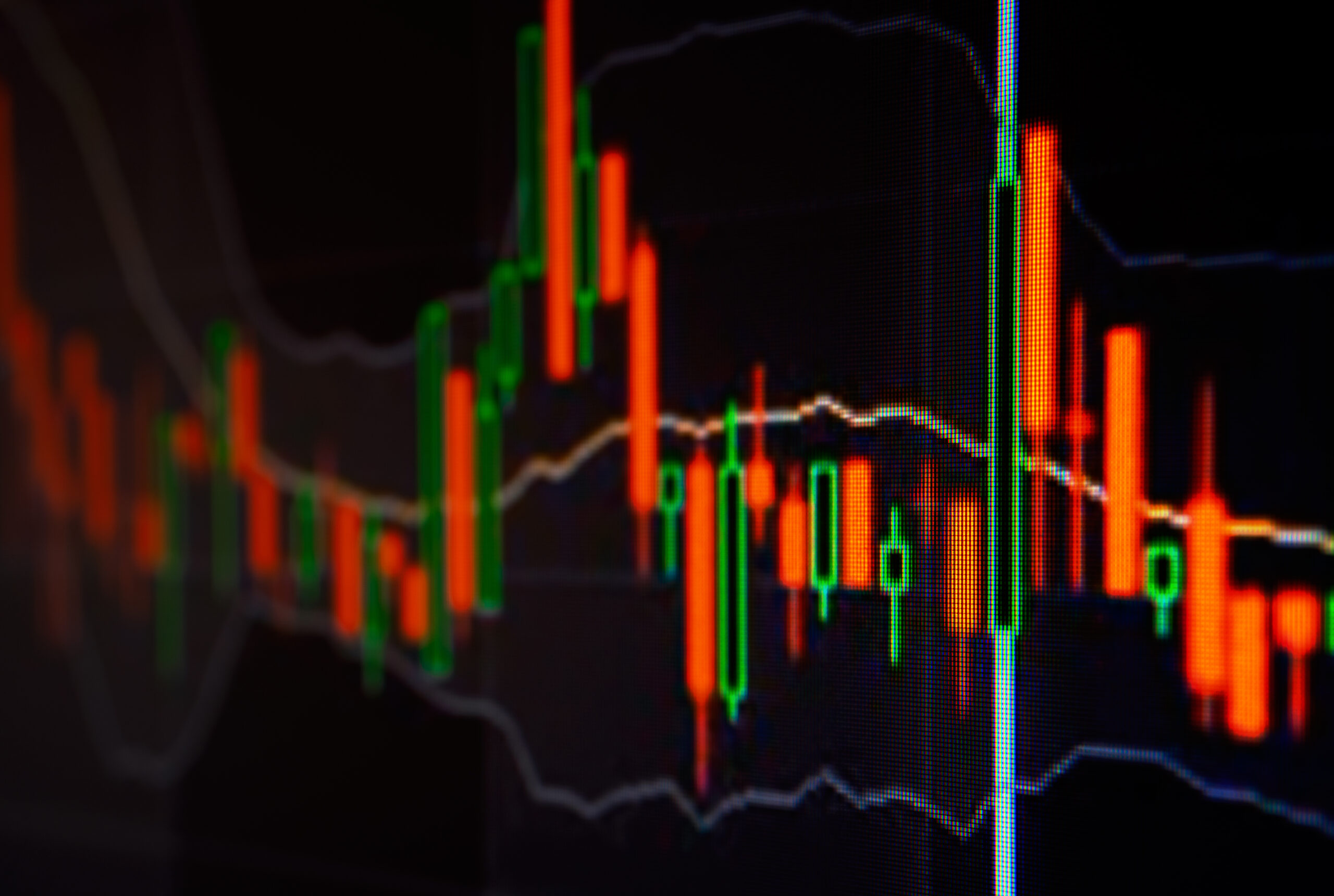The ‘buy the rumor sell the fact’ strategy is not merely a phrase thrown around by traders; it is deeply rooted in human psychology and manifests repeatedly in financial markets. Grasping why traders and investors eagerly enter a market in anticipation of news, only to promptly sell after the news is confirmed, can provide valuable insights for traders to avoid poor entry decisions and navigate market volatility.
Harness the Power of “Buy the Rumor Sell the Fact” to Gain Insight into Market Dynamics and Make Informed Trading Decisions
At first glance, it may seem illogical for markets to rise even before economic news or data is officially confirmed. Why wouldn’t investors or traders wait for concrete evidence before entering the market? However, what often occurs is the emergence of a narrative through price action, which anticipates positive news or data. This narrative gains momentum as more investors jump in, leading to a surge in market sentiment. Once the news is confirmed, profit-taking triggers a market sell-off, catching many off guard as they wonder why the market’s reaction contradicts the positive news.
Several factors contribute to the ‘buy the rumor, sell the fact’ phenomenon. Speculation plays a significant role, where market participants buy into an asset with the hope of selling it at a higher price in the future. When fund managers, investors, or traders analyze the market and identify an opportunity for price appreciation, they are likely to enter speculative positions.
Market-moving information, such as an interest rate decision by a central bank or rumors of a potential merger, prompts market participants to re-evaluate their bias and adjust their positions. Instead of immediate price adjustments, what often happens is an increase in price momentum as more investors join the trade. This phenomenon is driven by crowd psychology or herd behavior, where individuals collectively act based on the assumption that if everyone else is doing it, it must be the right thing to do.
The fear of missing out (FOMO) also plays a significant role in market behavior. Once crowd psychology gains momentum, it has the potential to accelerate as more participants who were initially on the sidelines feel compelled to join the trade, often at elevated levels. This impulsive behavior, driven by FOMO, often leads to a lack of long-term perspective and adds to price appreciation.
However, as soon as the anticipated news or data is confirmed, traders and investors seek to capitalize on their gains by selling and closing their winning positions. This mass selling can lead to a rapid decline in markets, amplified by momentum-based algorithms triggered by the selling pressure. Additionally, FOMO traders who entered the market at its peak may cut their losses after the sudden and sharp decline, exacerbating the downward spiral.
Two examples highlight the ‘buy the rumor, sell the fact’ phenomenon. In the June 2022 Federal Open Market Committee (FOMC) meeting, markets had already priced in a rate hike before it was officially confirmed, resulting in an immediate drop after the hike was announced. Similarly, when Elon Musk made his appearance on Saturday Night Live, Dogecoin experienced a significant surge in value prior to the event but faced a sharp decline afterward.

Source dailyFX
Understanding the underlying factors and psychological dynamics behind the ‘buy the rumor, sell the fact’ strategy empowers traders to navigate market volatility more effectively. By recognizing the influence of speculation, crowd psychology, FOMO, and mass selling, traders can make informed decisions, manage risk, and avoid being caught on the wrong side of market movements. Developing a deep understanding of trader psychology is essential for success in the ever-changing landscape of financial markets.
The ‘buy the rumor, sell the fact’ strategy is a recurring phenomenon in financial markets, deeply rooted in human psychology. By delving into the reasons behind traders and investors eagerly entering the market in anticipation of news, only to swiftly sell after confirmation, valuable insights can be gained to help traders make better entry decisions and navigate market volatility.
Initially, it may appear counterintuitive for markets to rise even before official confirmation of economic news or data. Why wouldn’t investors wait for concrete evidence before entering the market? However, what often happens is the emergence of a narrative through price action that anticipates positive news or data. This narrative gains momentum as more investors jump in, resulting in a surge in market sentiment. Once the news is confirmed, profit-taking ensues, triggering a market sell-off and leaving many perplexed as to why the market’s reaction contradicts the positive news.
Several factors contribute to the ‘buy the rumor, sell the fact’ phenomenon. Speculation plays a significant role, with market participants buying into an asset with the hope of selling it at a higher price in the future. When fund managers, investors, or traders analyze the market and identify opportunities for price appreciation, they are inclined to enter speculative positions.
Market-moving information, such as a central bank’s interest rate decision or rumors of a potential merger, prompts market participants to re-evaluate their biases and adjust their positions. Instead of immediate price adjustments, an increase in price momentum often occurs as more investors join the trade. This phenomenon is fueled by crowd psychology or herd behavior, as individuals collectively act based on the assumption that if everyone else is doing it, it must be the right thing to do.
The fear of missing out (FOMO) also plays a significant role in market behavior. Once crowd psychology gains momentum, it can accelerate further as more participants who initially remained on the sidelines feel compelled to join the trade, often at elevated levels. This impulsive behavior driven by FOMO often leads to a lack of long-term perspective and contributes to price appreciation.
Conclusion
However, as soon as the anticipated news or data is confirmed, traders and investors seek to capitalize on their gains by selling and closing their winning positions. This mass selling can lead to a rapid market decline, amplified by momentum-based algorithms triggered by the selling pressure. Additionally, FOMO traders who entered the market at its peak may cut their losses after the sudden and sharp decline, exacerbating the downward spiral.
Two notable examples highlight the ‘buy the rumor, sell the fact’ phenomenon. In the June 2022 Federal Open Market Committee (FOMC) meeting, markets had already priced in a rate hike before it was officially confirmed, resulting in an immediate drop once the hike was announced. Similarly, when Elon Musk made his appearance on Saturday Night Live, Dogecoin experienced a significant surge in value prior to the event but faced a sharp decline afterward.
Understanding the underlying factors and psychological dynamics behind the ‘buy the rumor, sell the fact’ strategy empowers traders to navigate market volatility more effectively. By recognizing the influence of speculation, crowd psychology, FOMO, and mass selling, traders can make informed decisions, manage risk, and avoid being caught on the wrong side of market movements. Developing a deep understanding of trader psychology is essential for success in the ever-changing landscape of financial markets.

